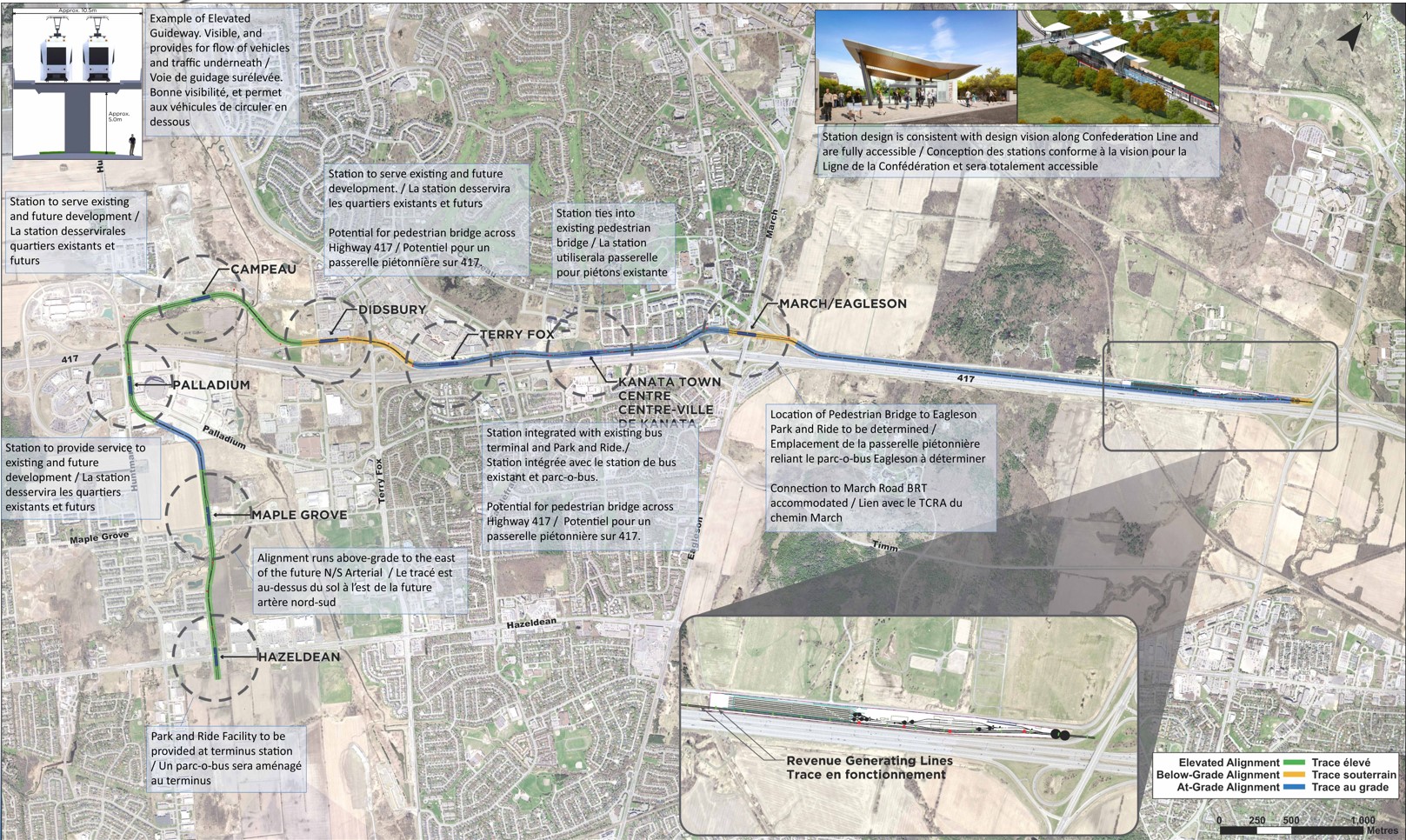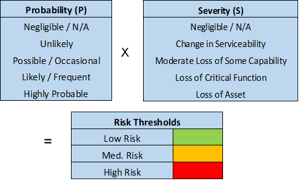As part of this EA Study, Morrison Hershfield was retained to conduct a Climate Change Vulnerability/ Resilience Assessment & Carbon Footprint/ Green House Gas Inventory to consider the potential effects of climate change on this transit infrastructure project and to identify potential adaptation requirements.
The City of Ottawa’s Kanata Light Rail (LRT) project involved an Environmental Assessment (EA) under the Ontario Transit Project Assessment Process to determine the impacts associated with the future expansion of the City of Ottawa’s LRT network to Kanata. The project is proposed to include a segregated LRT facility, 8 new transit stations, two new Park and Ride facilities, and a light maintenance and storage facility expansion. New pedestrian and cycling facilities would also be included in the project.
Project Challenge
Transit infrastructure in the Ottawa area and other regions of Ontario is currently designed and operated to handle a broad range of climate impacts, all based on experience with historic climate. However, because of climate change, the historical information used for infrastructure planning and design, as well as for purposes of ongoing operations and maintenance, is becoming less and less relevant, posing additional challenges for its sustainability, reliability, effectiveness, and costs for servicing.
Furthermore, there are growing expectations for organizations including governments to reduce the greenhouse gas (GHG) emissions associated with their services and reduce their vulnerability to changing climate conditions.

The Assessment
At this stage of the Kanata LRT Project, only major features of the project are known. This assessment was aimed at evaluating the infrastructure components that are known or could be reasonably assumed, including track, guideway, station components, and major watercourse crossings.
The methodology used in this assessment took into consideration methodologies based Engineers Canada’s PIEVC Protocol and the Ministry Of the Environment and Climate Change’s Guide to Considering Climate Change in the EA Process. The approach involved developing a list of climate variables (e.g. rain, snow) and a list of project components (e.g. rail, stations), and reviewing the potential interactions between each one.
Infrastructure components considered in this assessment include:
- Rail and Ballast (11 km)
- Catenary System
- Underpasses / Overpasses (4)
- Elevated Rail Segments (~4 km)
- Open Cut Rail Segments(<1 km)
- Watercourse Crossings (6)
- Stations (8)
- Park and Rides (2 existing, 1 new)
- Bus Terminal Facilities
- Passenger Pick-up and Drop-off Facilities
- New / Improved Pedestrian and Cycling Facilities
- New Multi-Use Pathway Bridges (2)
- Traction Power Substations
- Lighting
- Landscaping
- Stormwater Management
Assessment activities included comparing historical conditions to projected future conditions (e.g. extreme temperatures, extreme rainfall, wind, freeze-thaw) for multiple future planning horizons and moderate and high levels of climate change.
Analyses identified the following initial climate change variables:
- Projected increase of daily average temperatures;
- Projected increase of total annual precipitation;
- Downward trend in historical total annual snowfalls;
- Projected decrease in total days of freeze-thaw cycles;
- Projected increase of freezing rain event frequency;
- Projected increased to wind gusts over 70 km/h;
- Projected increase of water surplus during winter months and increased deficits during summer month; and,
- Projected increase of Intensity Duration Frequency (IDF) related to rainfall.
 As part of the risk assessment, potential hazards were identified. This was done by analyzing the effects of potential infrastructure components combined with climate factor interactions.
As part of the risk assessment, potential hazards were identified. This was done by analyzing the effects of potential infrastructure components combined with climate factor interactions.
Examples of identified potential hazards include:
- Extreme heat X track / Guideway = buckled rails
- Extreme precipitation X track / Guideway = overflowing ditches / inundated guideway
- Extreme precipitation X bridges / culverts over water = culvert washout
- Extreme rain (or wind) X pathways = flooding / loss of access

The probability of a negative event (low to high) was assessed for each combination of infrastructure component and climate change factor, as well as an assessment of the severity of an event if it happens (low to high).
Our services for this project also included performing a GHG inventory of the project’s emissions (in carbon dioxide equivalents), including emissions from fossil fuel combustion during construction, as well as embodied emissions of concrete and other building materials, calculated using the Athena Impact Estimator Tool.
Assessment Outcome
The final assessment identified potential climate change vulnerabilities / risks and provided the client with recommendations for potential design changes/ adaptions, implications for operations and maintenance, and monitoring requirements for enhanced resilience and adaptive management.
Participants were invited to participate in a discussion on the study’s findings and limitations, the risks identified or overlooked, and potential adaptation measures to be put forth as recommendations.
The study concluded that additional risk assessment (such as a PIEVC Protocol or other detailed climate change risk assessment) should be undertaken at the preliminary design stage of this project and should be supported by updated climate change projections with acceptable confidence, as determined by qualified climate change risk assessment professionals.
Ask our Experts
We conduct vulnerability and resiliency assessments to determine exactly where and what operations/ elements of your system are most vulnerable. The output of this exercise will provide data allowing you to perform an initial risk assessment for each operation or component of your transit system.
For more information on how we can help with your vulnerability and resiliency assessment requirements, please visit our Climate Resilience webpage or contact:
 Jim Teeple, Principal, Practice Lead, Transit Operations & Maintenance
Jim Teeple, Principal, Practice Lead, Transit Operations & Maintenance
416-499-3110 x1011224
 Andrew Harkness, Director, Environmental
Andrew Harkness, Director, Environmental
613-739-2910 x1022258
